PENGUIN CLASSICS  DELUXE EDITION
DELUXE EDITION
TITANIC, FIRST ACCOUNTS
TIM MALTIN has been studying the Titanic for twenty-five years and is the author of 101 Things You Thought You Knew About The Titanic... But Didnt! He is currently working on a National Geographic film and book about his ground-breaking Titanic research, which will be released in 2012. Tim works in London and lives in Wiltshire, England.
MAX ELLIS , originally trained as a precision engineer, is a professional illustrator based in London. He is the winner of the British Illustration (AOI) award for humor, and his clients include Advertising Age,Maxim, and Wired magazines.
NICHOLAS WADE is the grandson of Titanic survivor Lawrence Beesley and is the author of The Faith Instinct: How Religion Evolved and Why It Endures and Before the Dawn: Recovering the Lost History of Our Ancestors.
Titanic,
First Accounts
Edited with an Introduction by
TIM MALTIN
Afterword by
NICHOLAS WADE
PENGUIN BOOKS
PENGUIN BOOKS
Published by the Penguin Group
Penguin Group (USA) Inc., 375 Hudson Street, New York, New York 10014, U.S.A.
Penguin Group (Canada), 90 Eglinton Avenue East, Suite 700, Toronto, Ontario, Canada M4P 2Y3 (a division of Pearson Penguin Canada Inc.)
Penguin Books Ltd, 80 Strand, London WC2R 0RL, England
Penguin Ireland, 25 St Stephens Green, Dublin 2, Ireland (a division of Penguin Books Ltd)
Penguin Group (Australia), 250 Camberwell Road, Camberwell, Victoria 3124, Australia (a division of Pearson Australia Group Pty Ltd)
Penguin Books India Pvt Ltd, 11 Community Centre, Panchsheel Park, New Delhi - 110 017, India
Penguin Group (NZ), 67 Apollo Drive, Rosedale, Auckland 0632, New Zealand (a division of Pearson New Zealand Ltd)
Penguin Books (South Africa) (Pty) Ltd, 24 Sturdee Avenue, Rosebank, Johannesburg 2196, South Africa
Penguin Books Ltd, Registered Offices:
80 Strand, London WC2R 0RL, England
First published in Penguin Books 2012
Introduction and selection copyright Tim Maltin, 2012
Afterword copyright Nicholas Wade, 2012
All rights reserved
The Sinking of the Titanic Seen from a Lifeboat from The Loss of the Titanic: How I Survived the Sinking of the Titanic by Lawrence Beesley, published by Amberley Publishing, 2011. Reprinted by permission.
LIBRARY OF CONGRESS CATALOGING IN PUBLICATION DATA
Titanic, first accounts / edited with an introduction by Tim Maltin; afterword by Nicholas Wade.
p. cm. (Penguin classics deluxe edition)
ISBN 978-1-101-58750-8
1. Titanic (Steamship) 2. ShipwrecksNorth Atlantic Ocean. 3. Titanic (Steamship)Pictorial works. I. Maltin, Tim.
G530.T6T584 2012
910.9163'4dc23
2011047511
Except in the United States of America, this book is sold subject to the condition that it shall not, by way of trade or otherwise, be lent, resold, hired out, or otherwise circulated without the publishers prior consent in any form of binding or cover other than that in which it is published and without a similar condition including this condition being imposed on the subsequent purchaser.
The scanning, uploading and distribution of this book via the Internet or via any other means without the permission of the publisher is illegal and punishable by law. Please purchase only authorized electronic editions and do not participate in or encourage electronic piracy of copyrighted materials. Your support of the authors rights is appreciated.
Contents
Introduction
This book is as much for people who know a lot about the Titanic disaster as it is for those who know very little about it. This is because, for both experts and newcomers, if you want to know what really happened the incredible night the Titanic sank, you need to ask the people who were there. But the last Titanic survivor, Millvina Dean, died in 2009, aged ninety-seven, and she was only nine weeks old when the Titanic sank. In order to know what really happened on Titanic, all we have now is the recorded evidence of eyewitnesses.
Many of the most important of these eyewitness accounts were written or dictated by people who were there in 1912, immediately after their rescue. Titanics Assistant Saloon Steward Walter Nichols was even still wearing the pajamas in which he was saved, as he dictated his account to his sister. These first accounts provide the most accurate picture of what really happened that night and what it was like to be a passenger or crew member on the Titanic before, during, and after the sinking.
Titanic sank at 2:20 A.M. on April 15, 1912, on her maiden voyage. Under a perfect canopy of stars, more than 1,500 people drowned or froze to death that morning in the flat calm water of the North Atlantic. She was the latest in technology and contained within her steel walls a veritable Noahs Ark of nationalities, people from all different walks of life. But after Titanic had departed the scene that night, only the fundamentals remained: The stars above and men, women, and children struggling and dying in the black water below.
Although there are a few full-length accounts, many are in the form of private letters written by survivors aboard the rescue ship Carpathia or interviews given by survivors to the newspapers after they arrived in New York. The evidence of 150 survivors is also recorded in the transcripts of the exhaustive American and British public inquiries into the Titanic disaster conducted in 1912.
This book draws on all of these sources. We begin with The Sinking of the Titanic Seen from a Lifeboat, the fourth chapter from second-class passenger Lawrence Beesleys The Loss of the Titanic, written in 1912. Beesley gives us the most beautiful description of that terrible night, and his account immediately places his reader right on the spot, watching Titanic sinking. Beesleys is the most accessible full-length survivor account, written by a thirty-four-year-old man on his first voyage across the Atlantic. Beesley was a Cambridge scholar and later became the science master at Dulwich College in London. Indeed, at age seventy-nine, he taught my unclethen twelveat the Northwood School of Coaching in Middlesex, in 1956. It was Beesleys scientific account of the Titanic disaster that inspired me to look more deeply into its true causes, and his comment that the stars seemed to be flashing messages across the sky to each other was an important clue in explaining why the Titanic and the nearby Californian failed to communicate with each other by Morse lamp. Similarly, his description of the stars that night appearing to be cut in half by the horizon and throwing long beams of light along the sea to the survivors proved to be a useful description of the abnormal refraction or miraging present on the horizon that night, which had fatal consequences for the Titanic.
Beesleys account is followed by the complete text of The Truth about the Titanic, written by Colonel Archibald Gracie in 1912, before his death in December of that year from illnesses compounded by his traumatic experiences on the Titanic, which haunted him until the day he died. Gracie was swept off the deck by a wave caused by

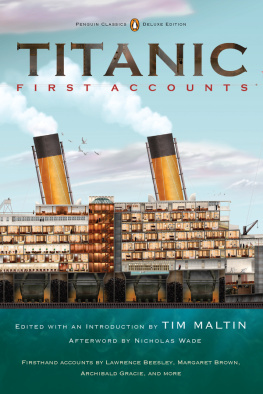
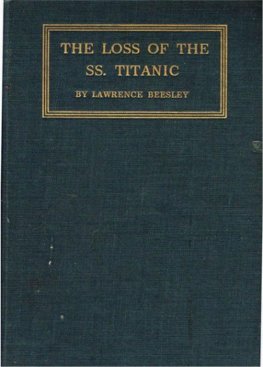
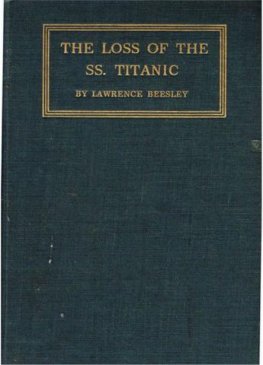
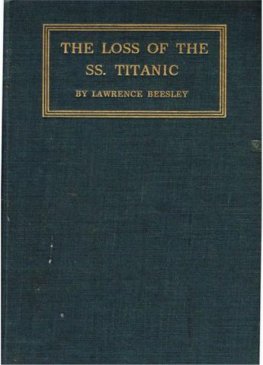

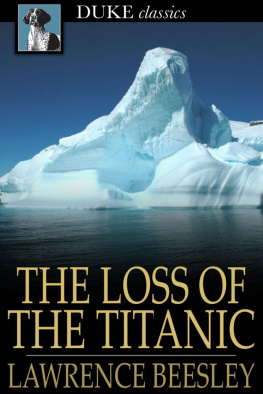

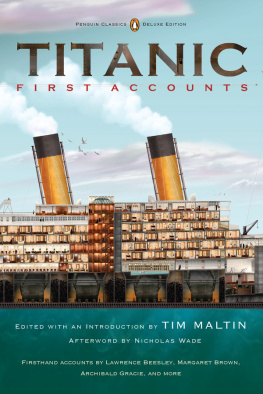
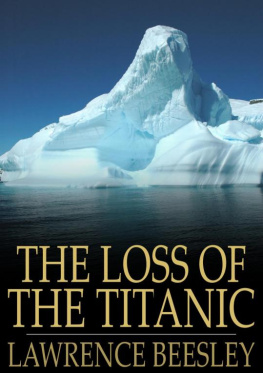

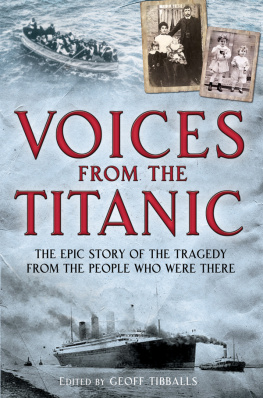


 DELUXE EDITION
DELUXE EDITION